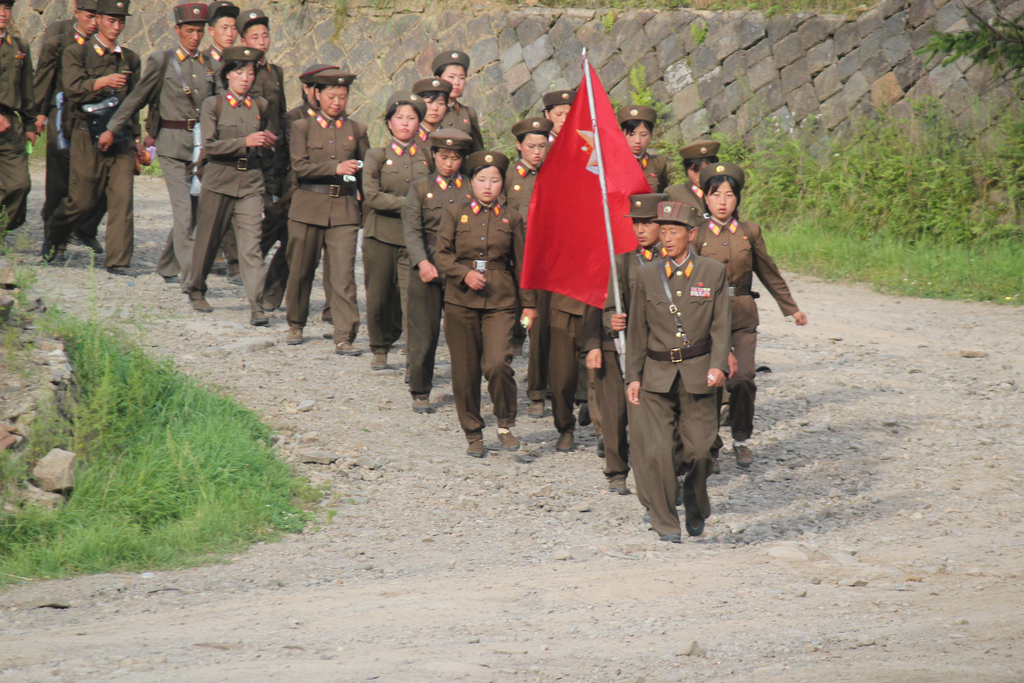By: Holly Boggs
Throughout history, there often exists a territory that is split along a horizontal line, which divides its people into two distinct northern and southern identities. The one territory shares historical and cultural background, yet consists of two opposing peoples. It is a tale as old as time, historically spanning the globe from America during the Civil War to Vietnam throughout the 1960s. These days, however, the competing North-South nations that are most prominent on the global radar are North and South Korea.
Last Tuesday, North Korea successfully performed its third underground nuclear test, signaling another step towards the development of a long-range nuclear missile capable of reaching the United States. This comes just a few months after their successful December satellite launch. North Korea validates its actions by taking the stance that the U.S. sanctions, which attempt to financially deplete the North Korean leadership and force them into submission, is an immediate security threat to the North Korean people. On Thursday, North Korean KCNA news agency released a statement saying, “If the U.S. and its allies challenge the DPRK (Democratic Peoples Republic of Korea) with ‘strong measures,’ (a) ‘financial freeze’ and fresh pressures and ‘sanctions’ over its underground nuclear test, it will react to them with stronger measures for self-defense.” This statement mimics a plethora of previous threats from North Korea to take stronger measures against the U.S. and its allies. The specifics of these measures remain unknown, but as of right now, it is confirmed that North Korea possesses medium-range missiles that have the capability of hitting South Korea or Japan.
Japan responded to this most recent threat by announcing that it will reconsider its pacifist constitution that has been in place since the end of World War II. Though its constitution forbids the country from having any standing offensive military, it still has in place measures to ensure its security. Itsunori Onodera, Japanese Defense Minister, argues “When an intention to attack Japan is evident, the threat is imminent, and there are no other options, Japan is allowed under the law to carry out strikes against enemy targets.” This stance could lead to sudden unrest within the region. Not only do the surrounding nations still carry a not-too-distant memory of an age when the Japanese forces oppressed their people, but also many of them are currently engaged in land disputes with Japan over small Pacific islands that could be aggravated by the re-interpretation of the Japanese pacifist constitution.
What about the response of South Korea, a country who shares a border and a long-standing grudge against the newly emerging Pacific nuclear power? Technically speaking, the two nations have been engaged in an ongoing war since 1950, so would this country not be horror-struck at the thought of a proliferated North Korea?
One news source reports that the South Korean people barely missed a beat last Tuesday upon hearing the reports of nuclear tests on the other side of their border. A South Korean citizen explains that “In the past… South Koreans would stockpile staple items in response to North Korean nuclear threats, and the country’s capital markets would react accordingly. This time, markets remained relatively stable.” Stories of North Korea nuclear program expansion and threats of aggression have become so commonplace that the South Korean main street remains un-phased.
The South Korean government issued a statement Thursday that they are prepared to attack if they feel that there is an imminent threat. They accompanied this statement with the deployment of a new cruise missile. Soeul has already recently relaxed procedure on the North Korean border to allow guards to return fire directly without first receiving the permission of an army chief. As the North takes more aggressive actions, the South has proportionally taken measures to prepare for an increasingly possible attack.
Though Japan and South Korea bristle at the prospect of future confrontation with North Korea, it is exceedingly unlikely that the United States, acting as security assurance for its two allies, would allow any significant escalation of conflict between the countries. A breakout of any battle in the region would set off the stability of the area as a whole and potentially weaken American influence in South-East Asia, leaving it vulnerable to the prying hands of the emerging competitor to American hegemony, China.
South Korean response to Northern threat has been mixed throughout the nation’s history. The former president, Kim Dae-Jung was known for a very lax stance towards the North entitled the “Sunshine Policy.” It combined a strategy of economic aid and investment to form a sort of invaluable bond between the two countries. The current president Lee Myung-bak, though, was elected in a landslide in 2008 and is known to take a hard-lined approach towards the Northern threat. South Korean leadership now welcomes a fresh face as president-elect, Park Geun-hye, will be taking office in two weeks. She brings with her the possibility of a revolutionary new approach to North Korea, which differs from the pattern of threats, tests, rebukes, and sanctions.
During her campaign, the president-elect claimed, “I plan to break with this black-or-white, appeasement-or-antagonism approach and advance a more balanced North Korea policy.” Though her plan lacks many specifics, it involves steps such as pushing for venues through which social and cultural exchanges can be fostered in the areas of public health, religion, and scholarship in order to deepen trust; allowing for a “Vision Korea” project to take root, after North Korea makes positive steps towards denuclearization, which would create a pan-Korean economic community; possibly internationalizing the Kaesong Industrial Complex; and embarking on a joint endeavor to explore underground resources. Some steps in her plan can be made without any stipulation, but the bulk of it does indeed rely on North Korea ceasing its endeavors in nuclear technology. On Tuesday, after the incident, Park announced that “North Korea’s nuclear test is a grave threat to the Korean peninsula and international peace, hampers inter-Korean trust-building, and undermines efforts for peace.” Park calls for a mix of both hard-line security measures and an open dialogue between the nations. She claims to be open to talks with Kim Jong-un at any time if it will help establish an agreement between the two Koreas.
The initial step to set in-motion Park’s plan for peaceful relations between the North and South now relies on convincing North Korea to back off on its nuclear ambitions. Right now, the most logical way of doing so is to work together with the U.S. and China and enforce global sanctions on North Korea. Without food, resources, and economic trade, the North Korean leadership will hopefully be coerced into abiding by the will of the international community. This approach has been attempted each step of the way by the U.S., but it has served only to provoke further nuclear development and threats by the North Korean government who do not want to be bullied into submission. Hopefully, though, as North Korea’s only real ally, China, becomes more wary of their pugnacious neighbors and less willing to appease their actions, this particular plan will become more and more effective.
For now, though, tension continues to rise, battle horns continue to sound, and the North Korean government figuratively echoes an aspiration seen time and again through history that, “they will rise again.”

